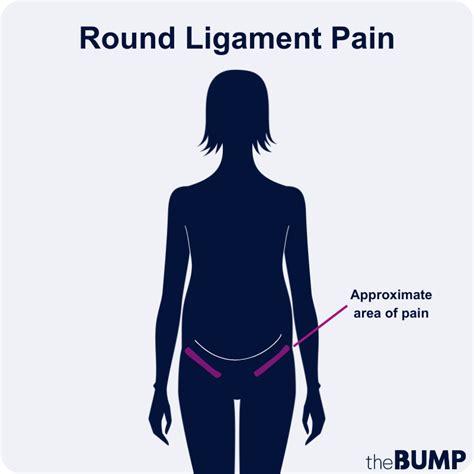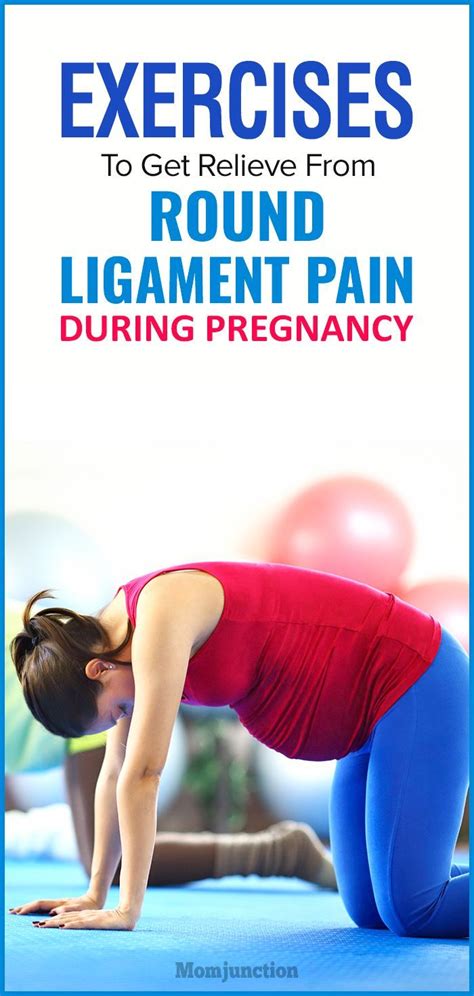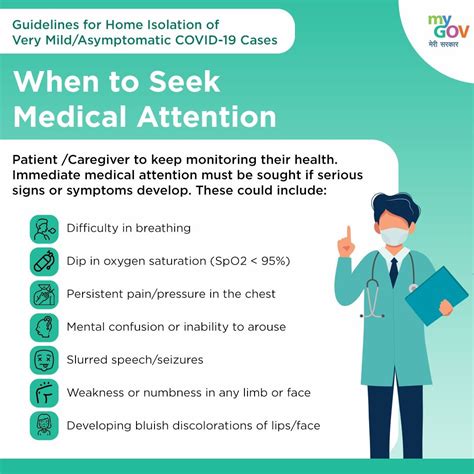Intro
Discover the causes and symptoms of round ligament pain, a common issue during pregnancy, and learn how to alleviate discomfort with gentle stretches and exercises, relieving pelvic pressure and lower back pain.
The journey of pregnancy is a complex and fascinating process, filled with numerous physical and emotional changes. Among the various discomforts that pregnant women may experience, round ligament pain is a common complaint. This type of pain is associated with the stretching and pulling of the round ligaments, which are crucial for supporting the uterus during pregnancy. As the uterus expands, these ligaments can become strained, leading to discomfort and pain. Understanding the causes, symptoms, and management strategies for round ligament pain is essential for pregnant women to navigate this challenging period with greater ease and comfort.
Pregnancy is a time of significant physical transformation, and the body undergoes numerous adaptations to accommodate the growing fetus. The round ligaments, which are fibromuscular connective tissue, play a vital role in maintaining the position and stability of the uterus. As the uterus expands, the round ligaments stretch and thicken to provide support. However, this stretching can lead to pain and discomfort, particularly in the second trimester when the uterus is growing rapidly. The pain associated with round ligament pain can range from mild to severe and is often described as a sharp, stabbing, or aching sensation in the lower abdomen or groin area.
The experience of round ligament pain can vary significantly among pregnant women, with some individuals experiencing mild discomfort and others encountering more severe pain. Factors such as the size and position of the uterus, the presence of any underlying medical conditions, and individual pain tolerance can influence the intensity and duration of round ligament pain. Furthermore, the pain can be exacerbated by certain activities, such as sudden movements, coughing, or sneezing, which can put additional strain on the round ligaments. Understanding the factors that contribute to round ligament pain is crucial for developing effective management strategies and improving the overall comfort and well-being of pregnant women.
What is Round Ligament Pain?

Symptoms of Round Ligament Pain
The symptoms of round ligament pain can vary among individuals, but common characteristics include: * A sharp, stabbing, or aching sensation in the lower abdomen or groin area * Pain that is exacerbated by sudden movements, coughing, or sneezing * Discomfort or pain that is relieved by rest or changing positions * Pain that is typically localized to one side of the abdomen, but can occur on both sides * Pain that can radiate to the groin or thigh areaCauses of Round Ligament Pain

Management Strategies for Round Ligament Pain
While round ligament pain can be uncomfortable, there are several management strategies that can help alleviate discomfort and improve overall well-being. These include: * Practicing good posture and avoiding sudden movements * Engaging in regular exercise, such as prenatal yoga or swimming, to strengthen the core and improve flexibility * Applying heat or cold therapy to the affected area to reduce pain and inflammation * Taking regular breaks to rest and change positions * Wearing a supportive belly band or maternity belt to help alleviate pressure on the round ligamentsExercises to Relieve Round Ligament Pain

Tips for Preventing Round Ligament Pain
While it may not be possible to completely prevent round ligament pain, there are several tips that can help reduce the risk and alleviate discomfort. These include: * Practicing good posture and avoiding sudden movements * Engaging in regular exercise to strengthen the core and improve flexibility * Wearing a supportive belly band or maternity belt to help alleviate pressure on the round ligaments * Taking regular breaks to rest and change positions * Avoiding heavy lifting or bending, which can put additional strain on the round ligamentsWhen to Seek Medical Attention

Conclusion and Next Steps
Round ligament pain is a common complaint during pregnancy, but it can be managed with the right strategies and support. By understanding the causes and symptoms of round ligament pain, pregnant women can take steps to alleviate discomfort and improve their overall well-being. If you are experiencing round ligament pain, be sure to talk to your healthcare provider about management strategies and any concerns you may have. With the right care and support, you can navigate this challenging period with greater ease and comfort.We invite you to share your experiences and tips for managing round ligament pain in the comments section below. Your insights and feedback can help others who may be going through similar challenges. Additionally, if you have any questions or concerns, please do not hesitate to reach out to us. We are here to provide you with the information and support you need to have a healthy and happy pregnancy.
What is round ligament pain?
+Round ligament pain is a type of pain that occurs during pregnancy, typically in the second trimester. It is caused by the stretching and pulling of the round ligaments, which are responsible for supporting the uterus.
How can I alleviate round ligament pain?
+There are several strategies that can help alleviate round ligament pain, including practicing good posture, engaging in regular exercise, applying heat or cold therapy, and taking regular breaks to rest and change positions.
When should I seek medical attention for round ligament pain?
+While round ligament pain is generally not a cause for concern, you should seek medical attention if you experience severe or persistent pain, vaginal bleeding or spotting, fever or chills, or abnormal vaginal discharge or odor.
